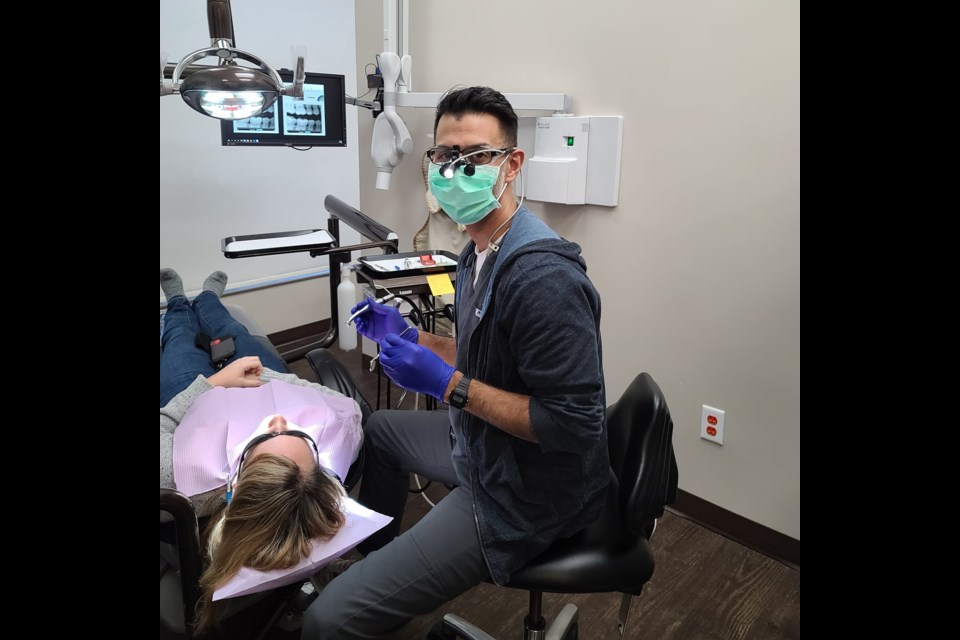Prince George dentist Jas Pahal won’t be signing up as a care provider for the Canadian Dental Care Plan (CDCP) the federal government is rolling out this spring.
Pahal says the new plan being unveiled this month to provide free dental coverage for seniors is unlike any other health insurance plan, which poses problems for his administrative staff at Hart Dental.
“I don’t have enough staff to deal with it,” said Pahal. “Taking on the new plan in the way they’ve put it out, it’s a whole different thing and getting somebody to navigate that whole system for me is just not feasible, I literally can’t do it.”
Pahal said it’s hard enough to find front-end dental administrative staff and get them trained on the software and teeth physiology and the codes used to designate procedures to submit to insurance companies.
Throwing in a new wrinkle with the CDCP, which has different fee guidelines from that specified in the B.C. fee guide, would create administrative headaches Pahal says he’s not prepared to take on.
For example, he says there’s is no mechanism for dentists to bill patients at the time of their visits for procedures and then have the federal plan reimburse them for what they paid at the dental office.
“That is not even an option,” said Pahal, “Not to say that we would do that, but it makes things a little bit tougher, especially in this beginning where they’re not really telling us what they are covering and how much they are covering.”
People aged 87 and older were the first to qualify for the CDCP when it took effect in December, and by May the plan will be open to those aged 65 and older. Applicants have been receiving letters from the federal government to show they are covered by the plan, but when they visit the dentist’s office they are not getting the coverage they thought they would.
“I have an 87-year-old friend who said he was fully covered and I was like, ‘sorry, you’re not,’” said Pahal. “Even on his letter it says he’s 100 per cent covered, and that’s not necessarily true. It’s 100 per cent coverage of what they’re saying it is.
“When somebody comes in with the expectation they’re covered, I don’t know what is going to come out the other end for the insurance bit. The last thing I want is to deal with irate customers. Honestly I’m very nervous.”
Participation in the CDCP is voluntary and so far there are nine family dentists in Prince George registered as care providers for the plan. The insurer, Sun Life Financial, has an updated list of the registered oral health care providers on its website.
Pahal says he is waiting for other dentists to register with the program to receive their feedback before he makes that commitment.
“We have so much trouble with all the rest of the plans and going to one now that’s government administered, nobody really knows that’s going on, maybe it will be a time thing,” said Pahal.
“I’m not saying we won’t ever accept it, but for this time I won’t be.”
If he was registered, Pahal says he doesn’t know if he could opt out of the program if that’s what he decides.
“They’ve got a lot of fine print,” said Pahal. “Once you’ve agreed to the terms and you’ve signed up and start accepting patients then you’re bound by all the rules and that’s what I think is scaring everybody.”
The CDCP has restrictions on the frequency of such procedures as teeth cleaning, which limits it to once every 12 months. Pahal also says to won’t cover the full cost of a root canal on a patient who already has a lot of cavities.
“The only people who actually ever need a root canal is people with cavities,” he said. ”It’s very rare to need a root canal if you don’t have any cavities. You can bill and do the service, but after the fact they can claw that money back.”
Patients are eligible for 100 per cent coverage of the CDCP fee rate, provided the net family income is less than $70,000. A patient whose family income is between $70,000 and $79,999 will receive 60 per cent fee coverage, while those who make between $80,000 and $89,999 will get 40 per cent coverage.
So what happens if those income levels suddenly change and instead of 100 per cent coverage they only qualify for 40 per cent? Is the onus on dentists to survey their patients and require proof of income? Pahal has no idea what would happen if he did the work on somebody who, due to a change in age or income, is suddenly not eligible for full coverage. How then would he collect his fees?
“I don’t know how this is going to play out,” said Pahal. “People don’t have coverage and need coverage and could benefit from this coverage and I feel terrible at this point not being able to offer it.
“There’s going to be a lot of angry people.”


